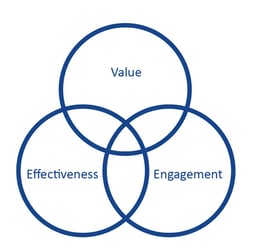Digital assistants go by many names - chatbot, virtual assistant, conversation agent—to name a few. They live in different devices (phones, smart speakers), platforms (apps, web), and environments (cars, homes). They are conversation based interfaces people use by typing, talking, or both. Regardless of what we call them or how we interact with them, digital assistants are becoming more common. Since Apple’s launch of Siri in 2011, we’ve witnessed a surge in market commitment to digital assistants from both tech giants and businesses across industries.
Brands are using these conversational interfaces to provide customer support, deliver services, recommend products, and entertain users. Like a human assistant, a digital assistant’s purpose is to make your life easier and more pleasant by efficiently completing the tasks of daily life and freeing up time for deeper work or more enjoyable activities. Digital assistants that do this successfully can improve a brand’s customer experience, increase brand loyalty, and decrease customer support costs.
We conducted a 2-week diary study with smart speaker owners across the United States to understand what makes a digital assistant successful, followed by in-person in-depth interviews with a selected group of participants from the diary. The results are captured in our latest report, Elements of a Successful Digital Assistant and How to Apply Them. Here are some of our key findings:
Expectations change over time.
While many early adopters were patient with smart speaker capabilities, over time expectations have risen. It's much harder to impress new users, and early adopters are getting tired of hearing "Sorry, I don’t understand that.” repetitively from their smart speakers. Users also wanted more fun and engaging conversations with the digital assistants over time.
The ability to get things done is more important to users than the how.
While clear input modality preferences exist, users see chatbots as the ‘written Alexa’ and expected both to deliver added value, effectiveness, and engagement, whether they type or speak to the assistant. Users judge a digital assistant purely based on its ability to complete tasks, not the level of technology present in the backend.
Hand-off experiences are crucial.
Handoffs between the digital assistant and other platforms are becoming more common, e.g., from a smart speaker without a screen to a screen-based device such as a phone. Users are often disappointed by not knowing where to go next or simply being dropped when the digital assistant doesn’t seamlessly transition them to another platform. Users expect more hand-holding from the digital assistant, especially over voice.
Brands must build trust, especially when stakes are high.
Trust is the connective tissue between your users and your product. People will not return to a digital assistant after it fails at tasks that have high social, financial, and health risks. When the stakes are high, build trust by setting expectations, communicating values, and clearly stating limitations.
Design - not just technology- is critical to effective conversation design.
Technology alone won’t solve experience problems - AI is inherently context-naïve. Teams must consider and design for the dynamic and complex user contexts.
When digital assistants fail, brands do too.
In today’s experience, brand absence from digital assistants is not yet a problem, but a mediocre experience is. And, for established brands, the bar is higher.
Brands must get three experience dimensions right for a digital assistant to be successful:
 Value: Adding value is key to adoption. Otherwise, users revert to existing ways of interacting with the brand. Digital assistants that add value enable users to do more in less time, or have a richer experience in the same amount of time.
Value: Adding value is key to adoption. Otherwise, users revert to existing ways of interacting with the brand. Digital assistants that add value enable users to do more in less time, or have a richer experience in the same amount of time.
Effectiveness: The ability to speak to the digital assistant in a natural manner and get accurate answers is also key to adoption. Teams must consider and design for the timeless challenges in human interaction to stay ahead of technological changes.
Engagement: There are clear markers (word choice, tone, sound, gender, etc.) of personality that users notice in digital assistants. Brands succeed by using personality to enhance already effective experiences, and fail by poorly executing personality as a buffer for bad experiences.
There are nuances to getting each of these elements right, especially in regards to industry, function, and audience. Our research dives into the pitfalls and recommendations of each dimension so you can determine your digital assistant strategy and approach. To learn more about these findings, download the full report.
